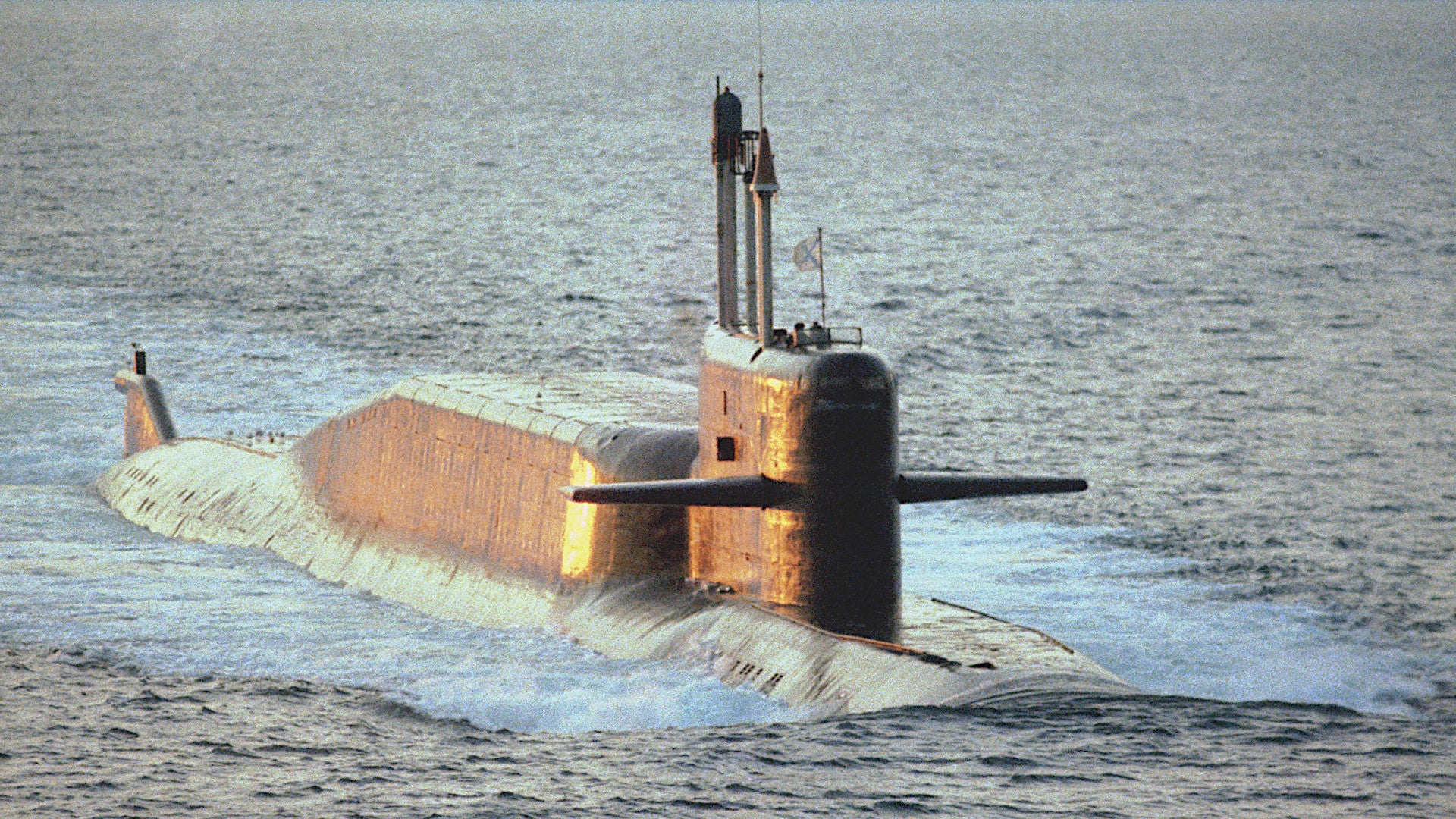Russia is reportedly working to equip certain classes of submarines, especially ballistic missile-armed types that form the core of its second-strike nuclear deterrent capabilities, with new expendable electronic warfare jammers. These are primarily meant to help protect the boats from sonobouys by preventing them from transmitting data to maritime patrol aircraft and anti-submarine helicopters flying above. This development comes as the United States, as well as its NATO allies, have been stepping up anti-submarine operations amid a notable uptick in Russian submarine activity.
Russian newspaper Izvestia
first reported these developments on Mar. 12, 2020. It’s unclear from their story whether the Russian Navy has begun taking delivery of these countermeasures, known as the Burak-M, already, or if they are still in development. Typically, in Russia’s weapon naming conventions, an “M” at the end stands for the Russian word for “modernized,” which could imply that there was an earlier Burak design that may already be in service.
Izvestia said that Burak-M functions by floating the surface and then automatically activating its jamming system, which blocks sonobuoys from transmitting information gathered from their onboard acoustic sensors. It’s unclear how submarines launch them in the first place, but the most likely method is via tubes that military submarines have in order to launch other countermeasures, such as acoustic decoys meant to counter homing torpedoes.
The report also did not give any approximate range far-reaching the Burak-M’s jamming capabilities might be and whether it might be capable of scrambling other systems beyond sonobouys’ communications and data links. Izvestia did indicate that the system was intended to provide sufficient room to maneuver for the launching submarine so that it could slink away from its pursuers.
Even if Burak-M’s capabilities were limited to blocking the ability of these floating sensors to communicate with their launching aircraft and helicopters, it would still be a valuable addition to the overall countermeasures suite available to Russian submarines. Though anti-submarine warfare has evolved considerably since the end of World War II, sonobuoys remain a key tool for maritime patrol aircraft and anti-submarine helicopters. The U.S. Navy’s latest P-8A Poseidon maritime patrol planes actually lack a magnetic anomaly detector (MAD), something that used to be a default for anti-submarine aircraft, in favor of an improved acoustic sensor system that includes sonobuoys.
During regular anti-submarine warfare operations, aircraft and helicopters will drop large sonobuoy arrays in order to fix the position of an opposing submarine and monitor its movements, something you can read about in more detail in this past War Zone piece. During an actual conflict, this might then allow the aircraft or helicopter orbiting above to directly engage the threat, or to feed that information to other assets, including ships and submarines in the area.
It is certainly possible for submarines to escape a sonobuoy net, especially nuclear-powered types or diesel-electric boats with advanced air-independent propulsion (AIP) systems, which can remain submerged for weeks or even months at a time. Improved designs with features to reduce their acoustic signature are difficult to detect in the first place. However, none of this completely eliminates the chances of being spotted and Burak-M would offer an additional option for a submarine looking to rapidly disengage from hostile aircraft or helicopters attempting to pin it down.
It’s perhaps not surprising then that Izvestia said that the first submarines set to receive Burak-M would be the Russian Navy’s ballistic missile boats, including the new Project 955 Borei and future Project 955A Borei-A classes, as well as the Project 677BDRM Delfin class, also known a the Delta IV class. It is critical to Russia’s nuclear deterrent posture that these submarines remain as hidden as possible while on patrol to ensure their ability to launch nuclear retaliatory strikes, if necessary.

Project 636.3 Varshavyanka class attack submarines, also known as Improved Kilo class boats, as well as examples of the Project 677 Lada class, of which there is only one built so far, could also receive Burak-M. These are both diesel-electric types. The Project 636.3s notably lack an AIP system, meaning that persistent harassment from sonobuoys could potentially force them to surface, where they would be especially vulnerable, depending on how well charged their batteries are and the state of their oxygen supply during an engagement. One of these submarines caught snorkeling, or even recharging on the surface, could have to quickly dive and try to escape in a limited amount of time before having to resurface again.

Burak-M is also just another example of the growing importance of electronic warfare to military forces around the world, especially in the maritime domain. Russia, in particular, has invested significant resources in developing advanced electronic warfare capabilities, but primarily for land-based applications.
The development of this new electronic warfare countermeasure comes as the United States, together with its NATO allies, have significantly stepped up anti-submarine operations in recent years. This has been in response to increased Russian submarine patrols, especially in the Atlantic Ocean and Arctic region.
Maritime patrol planes dropping sonobuoys have been a core part of those efforts to monitor Russia’s submarine activities. This is reflected particularly well in U.S. Navy budget requests, the lastest of which, for the 2021 Fiscal Year, asks for nearly $238 million to buy tens of thousands of sonobuoys. The service is also looking to get almost $26.2 million more for sonobuoys in the supplemental Overseas Contingency Operations budget for this upcoming fiscal cycle.

This is less money than the Navy received for these air-dropped anti-submarine warfare sensors in the 2020 Fiscal Year budget, but still more than it got in the 2019 Fiscal Year budget. The service expects to continue buying sonobuoys every year at approximately the same rate through at least Fiscal Year 2025.
The United States, in particular, does not look like it will be scaling back its anti-submarine activities any time soon. The news about Burak-M may only be the start of more reports of Russia deploying other new countermeasures in response.
Contact the author: joe@thedrive.com
